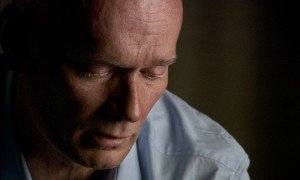 Some Jews in Germany, France and Sweden have stopped wearing skullcaps for fear of reprisals.
Some Jews in Germany, France and Sweden have stopped wearing skullcaps for fear of reprisals.
Teachers of children learning under the academy system in England are not obliged to teach their pupils about the holocaust, but i think it is vital that we keep looking, to see what great harm we are capable of inflicting on each other (and ourselves) on the basis of our beliefs. If you can, do go to see the film ‘My Nazi Legacy’ which clearly shows this.
I recommend it also partly as an example of how through a distorted form of love/fear/blindness truly horrific objectification can be accepted as appropriate and normalised and for seeing how the ramifications of past turbulence continues to manifest through time, but also for what can happen when we try to force another to look through our eyes, trying to reach resolution on the basis of reflections. I think it will make you weep for all concerned.
Our certainties around the definitions we hold about what we are and how we behave – what other people are – what we can infer about them from their behaviour – and how and why the world is as it is – all should come under scrutiny within a dharma investigation.
Often there is unwillingness to carry out this investigation into the origin and validity of these definitions – for some this seems to be because any suggestion of a miss-take on the ego’s part would be too destabilising to countenance, so they fearfully tighten up against the invitation.
Others, equally understandably, are just pretty happy with their take on the world. In knowing what’s what, there is a sense of certainty which feels powerful. The ego likes a sense of being knowledgeable and powerful, it feels secure.
However these opinions are shaped by the karma of reactivity to past situations, to reactivity to situations encountered during this life. They form a distorting lens through which we view all manifestations, pulling them into a shape which is recognisable to our own internalised matrices. At the same time we ourselves are pulled into a position as ‘shapers’ and we become more rigid as a result of this repeated activity.
So we need to undertake this investigation with kindly curiosity. We won’t be able to work with what we are holding on to, and let go of that which is not helpful, without seeing what is under the covers. One man i spoke with thanked me as he left for exposing a prejudice of which he was unaware. I had explained why i did not really think the world would be a better place if we put all the fat people and stupid people in a rocket and send them out to space! He was not being ironic, he had just formed this quick opinion at some point and held onto it without really looking at the non-sense of it. Meditation can allow the appearance and release of all the buried….erm.. ‘treasure’.
As dharma practitioners, and I’m talking to myself here, in taking that which is transient and impermanent, lacking in inherent self-nature, to be solid and real… and then hanging our own ‘Home-made’ label around its neck… we continue with the stupidity of the slavemasters who were able to debate philosophy and write the hymn ‘Amazing Grace’ on the jetty while the nearby slave ships were being cleared of bodies and disinfected.
‘Though the heavens may fall let justice be done’ was the statement preceding the judgement which led to the act abolishing slavery in the UK. This judgement was about whether a slave was inherently a ‘slave-thing’ or was a ‘human-thing’ with potential.
From a dzogchen perspective, there are no ‘things’ per se and so labels cannot be applied in any enduring sense – “Birds which live on the Golden mountain take on the colour of the sun.”
The desire for a simple label – hero/villain – denying the multiplicity of behaviours and capacities can be seen in the film ‘My Nazi Legacy’ and heard in the radio programme The good Goering. It seems that, with brotherly love, even the ‘bad’ Goering did some good…and I also remember being struck by an interview with the daughter of Idi Amin who really loved her dad and found it so hard to believe that he really had perpetrated such acts of violence…with her he was different.
If we can see that the ‘bad’ and the ‘good’ are mixed in together… in ourselves as well as others… then hopefully our own judgements can soften and dissolve. People act as they do, dependent on past and present causes and conditions, not in isolation, and in their relating to us own own behaviour is also implicated.
I think it helps to soften our view to think that, in the future or the past, despite our current beliefs and assertions we may behave in the same way as those we label as ‘monsters’ and that, although we are not defined by our behaviours, if they are coming from the position of the ego then we will inevitably experience the effects of the karma created. Paying attention to the details while practising to realise the ground openness is the move needed to expand justice, which at its worst is just-ice, to the warmer waters of ‘just-as-it-is-ness’ and the arising of an appropriate response. With liberation from mental slavery the heavens may indeed fall… along with the hells!



